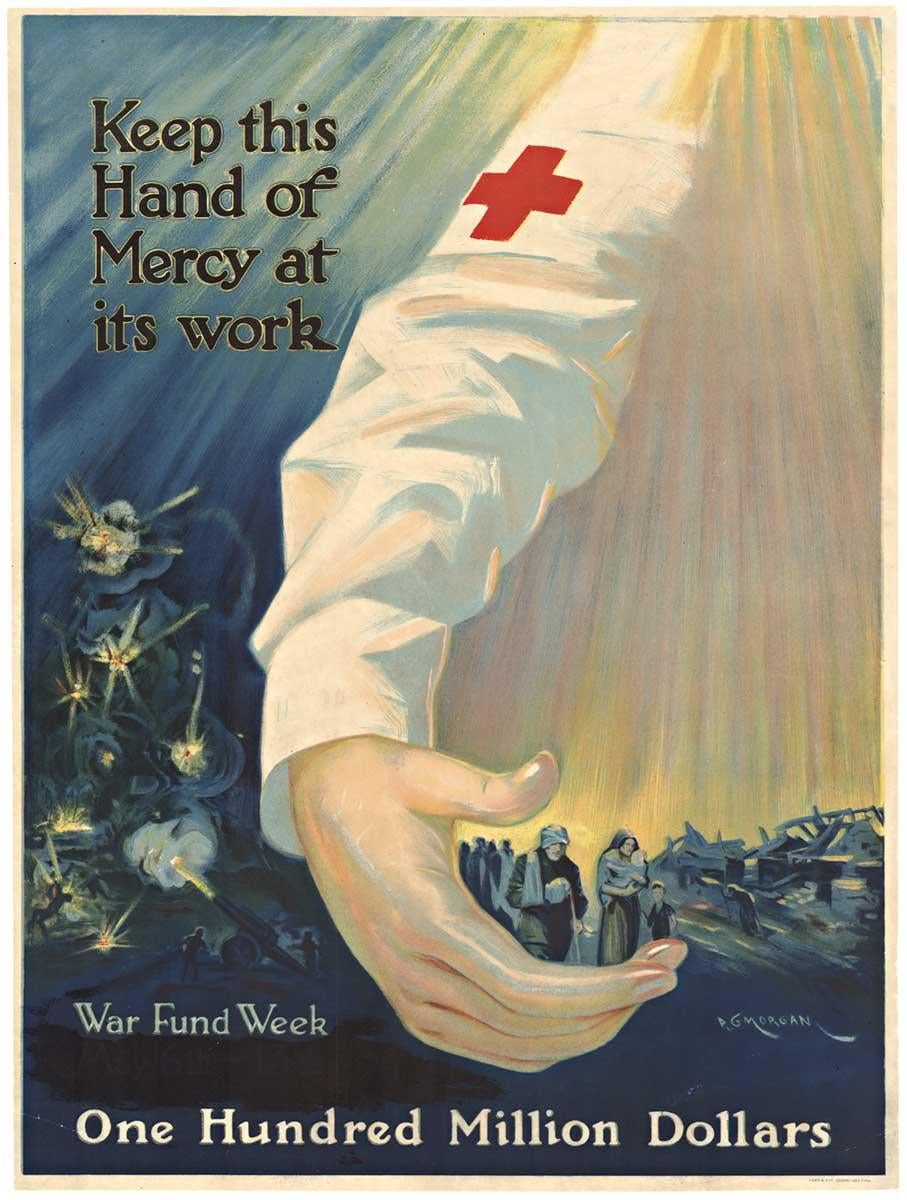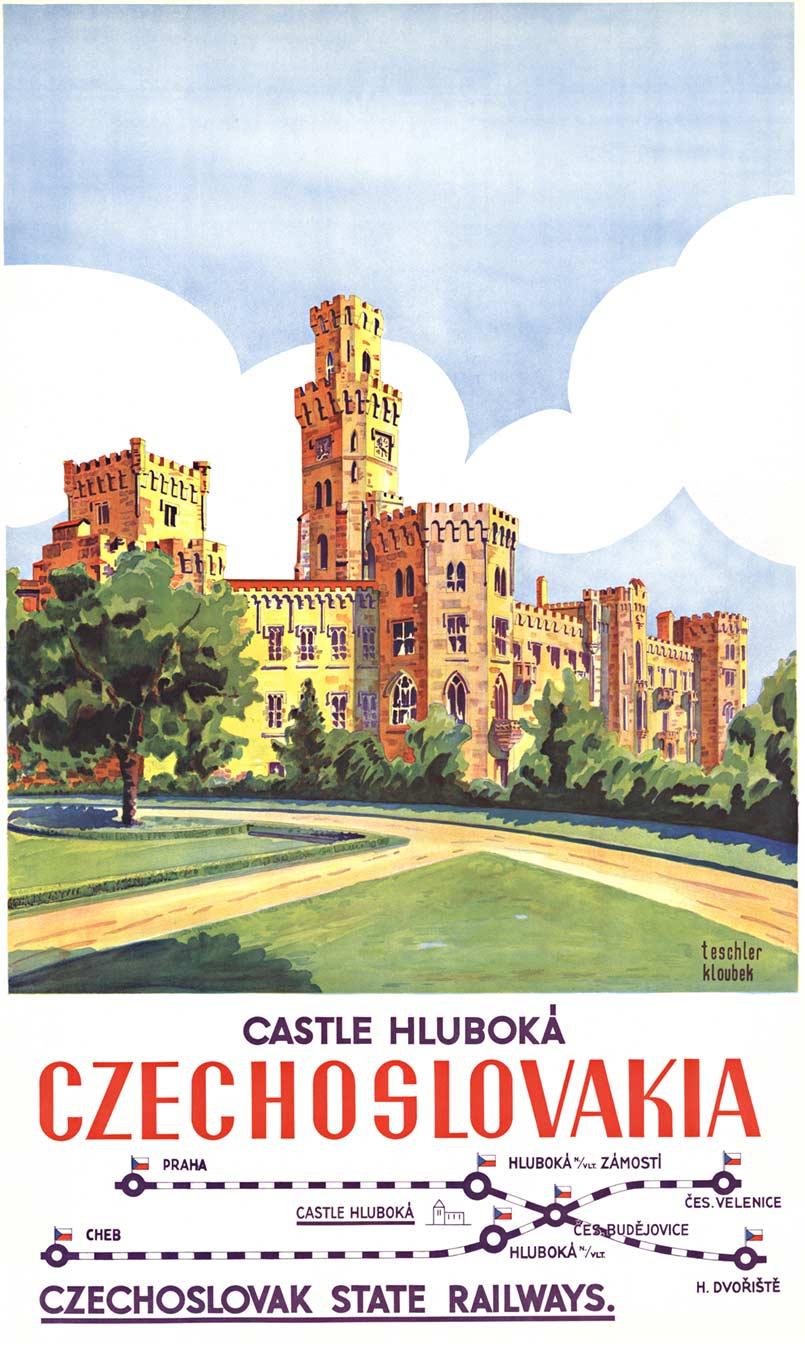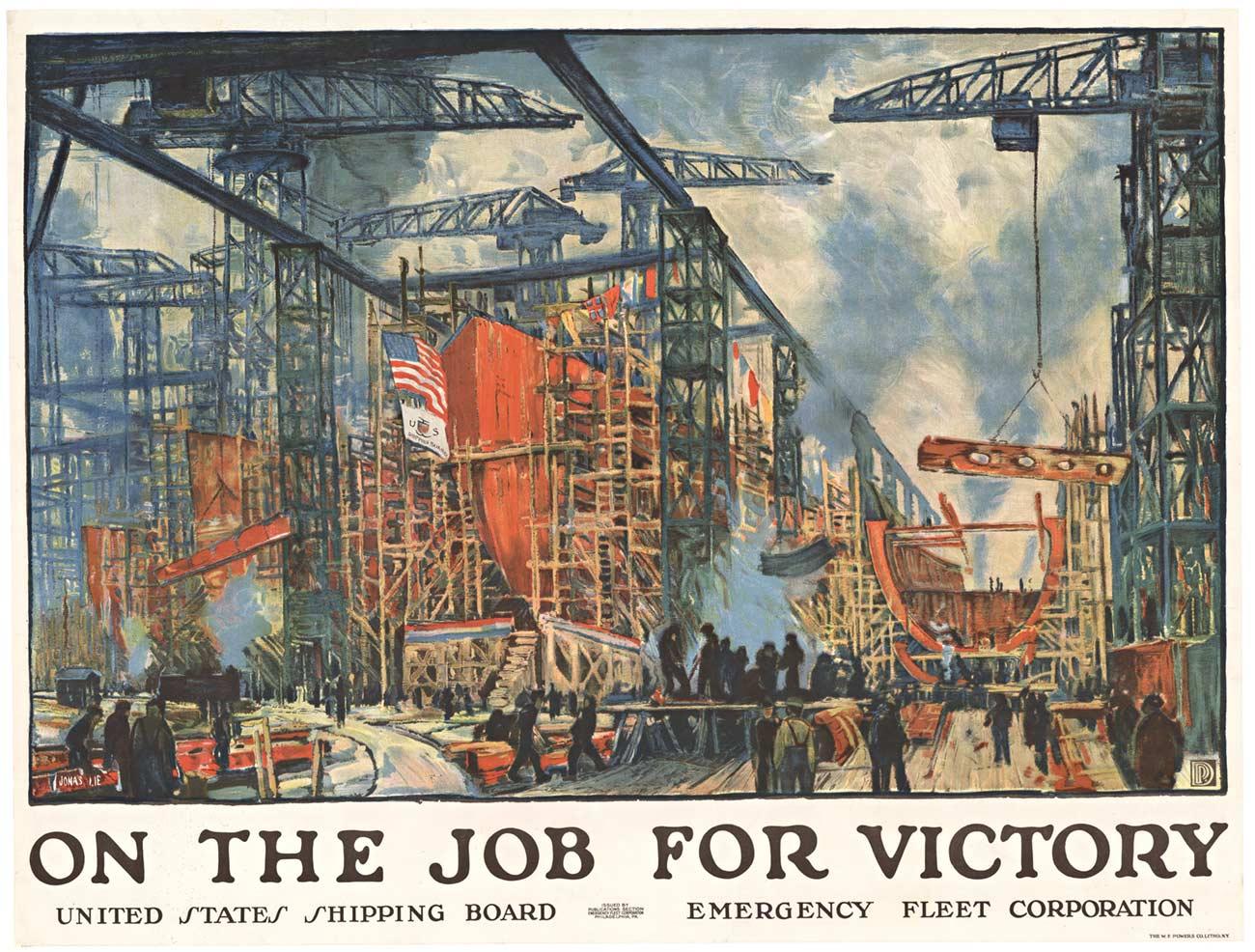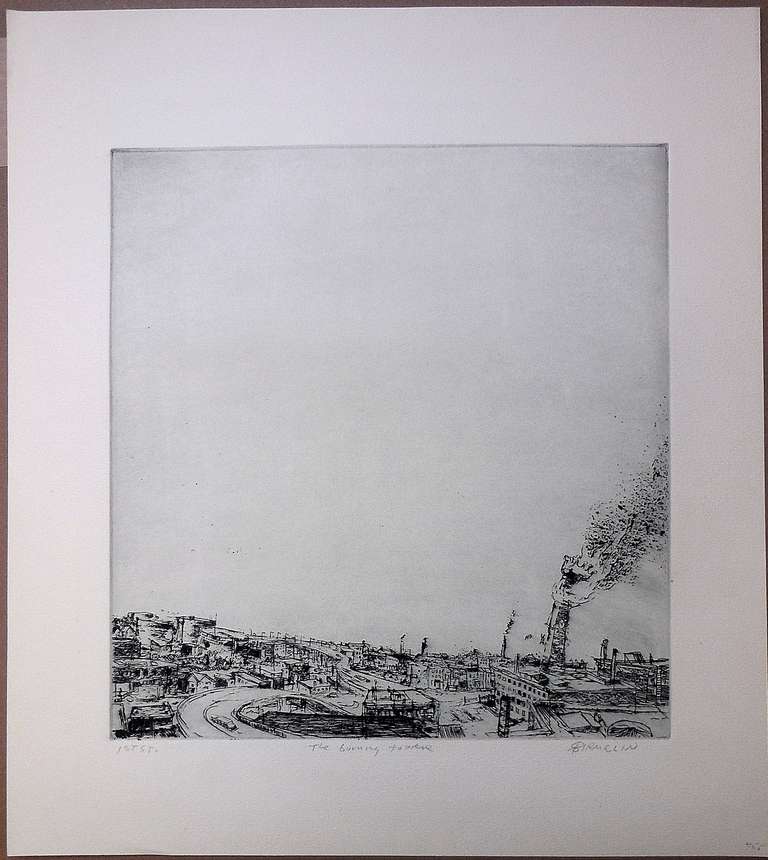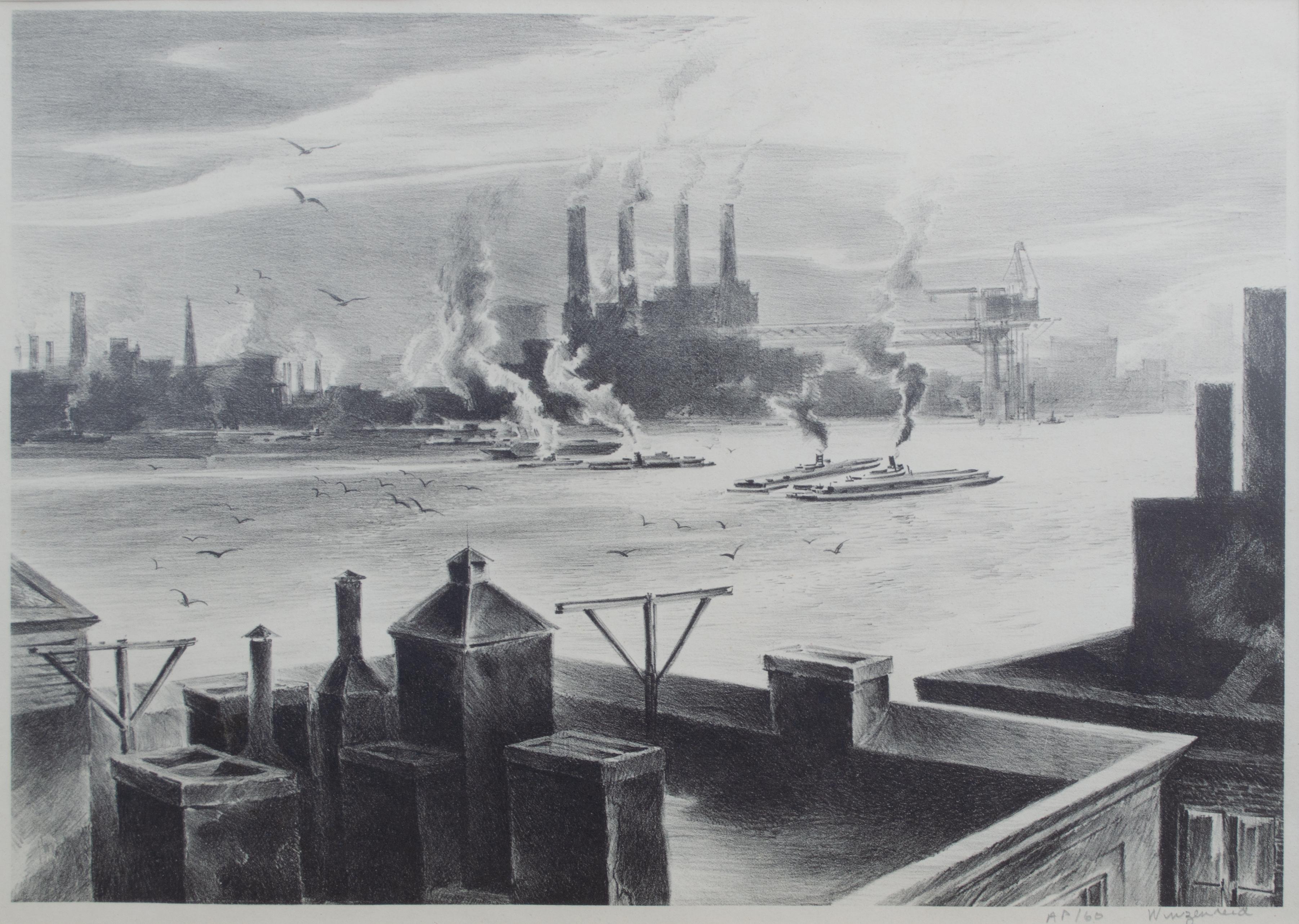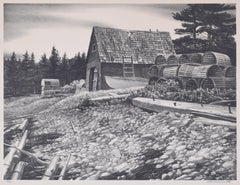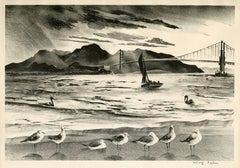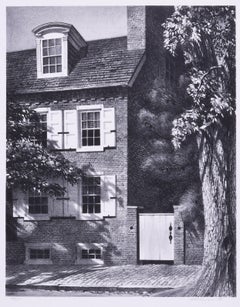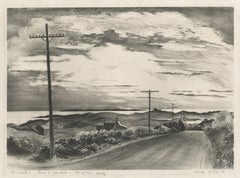
Road to Gayhead (Martha's Vinyard)
View Similar Items
Want more images or videos?
Request additional images or videos from the seller
1 of 10
Adolf DehnRoad to Gayhead (Martha's Vinyard)1935
1935
About the Item
- Creator:Adolf Dehn (1895 - 1968, American)
- Creation Year:1935
- Dimensions:Height: 10.13 in (25.74 cm)Width: 14 in (35.56 cm)
- Medium:
- Movement & Style:
- Period:
- Condition:
- Gallery Location:Fairlawn, OH
- Reference Number:Seller: AD0293_Gene1stDibs: LU1409901582
About the Seller
5.0
Recognized Seller
These prestigious sellers are industry leaders and represent the highest echelon for item quality and design.
Platinum Seller
These expertly vetted sellers are 1stDibs' most experienced sellers and are rated highest by our customers.
Established in 1978
1stDibs seller since 2013
718 sales on 1stDibs
Typical response time: 1 hour
Associations
International Fine Print Dealers Association
More From This SellerView All
- Lobsterman's Cove, Winter Harbor, MaineBy Stow WengenrothLocated in Fairlawn, OHLobsterman's Cove, Winter Harbor, Maine Lithograph, 1941 Signed in pencil lower right (see photo) Edition 50 Impressions are in the collection of the Pennsylvania Academy of the Fine...Category
1940s American Realist Landscape Prints
MaterialsLithograph
- The Golden GateBy Adolf Arthur DehnLocated in Fairlawn, OHThe Golden Gate Lithograph on wove paper watermarked GC, 1940 Signed in pencil by the artist (see photo) Publisher: Associated American Artists Edition: 189, unnumbered The image depicts The Golden Gate Bridge which connects San Francisco and Marin County, California References And Exhibitions: Illustrated: Adams, The Sensuous Life of Adolf Dehn, Fig. 13.17, page 324 Reference: L & O 325 AAA Index 391 Adolf Dehn, American Watercolorist and Printmaker, 1895-1968 Adolf Dehn was an artist who achieved extraordinary artistic heights, but in a very particular artistic sphere—not so much in oil painting as in watercolor and lithography. Long recognized as a master by serious print collectors, he is gradually gaining recognition as a notable and influential figure in the overall history of American art. In the 19th century, with the invention of the rotary press, which made possible enormous print runs, and the development of the popular, mass-market magazines, newspaper and magazine illustration developed into an artistic realm of its own, often surprisingly divorced from the world of museums and art exhibitions, and today remains surprisingly overlooked by most art historians. Dehn in many regards was an outgrowth of this world, although in an unusual way, since as a young man he produced most of his illustrative work not for popular magazines, such as The Saturday Evening Post, but rather for radical journals, such as The Masses or The Liberator, or artistic “little magazines” such as The Dial. This background established the foundation of his outlook, and led later to his unique and distinctive contribution to American graphic art. If there’s a distinctive quality to his work, it was his skill in introducing unusual tonal and textural effects into his work, particularly in printmaking but also in watercolor. Jackson Pollock seems to have been one of many notable artists who were influenced by his techniques. Early Years, 1895-1922 For an artist largely remembered for scenes of Vienna and Paris, Adolf Dehn’s background was a surprising one. Born in Waterville, Minnesota, on November 22, 1895, Dehn was the descendent of farmers who had emigrated from Germany and homesteaded in the region, initially in a one-room log cabin with a dirt floor. Adolf’s father, Arthur Clark Dehn, was a hunter and trapper who took pride that he had no boss but himself, and who had little use for art. Indeed, during Adolf’s boyhood the walls of his bedroom and the space under his bed were filled with the pelts of mink, muskrats and skunks that his father had killed, skinned and stretched on drying boards. It was Adolf’s mother, Emilie Haas Dehn, a faithful member of the German Lutheran Evangelical Church, who encouraged his interest in art, which became apparent early in childhood. Both parents were ardent socialists, and supporters of Eugene Debs. In many ways Dehn’s later artistic achievement was clearly a reaction against the grinding rural poverty of his childhood. After graduating from high school in 1914 at the age of 19—an age not unusual in farming communities at the time, where school attendance was often irregular—Dehn attended the Minneapolis School of Art from 1914 to 1917, whose character followed strongly reflected that of its director, Munich-trained Robert Kohler, an artistic conservative but a social radical. There Dehn joined a group of students who went on to nationally significant careers, including Wanda Gag (later author of best-selling children’s books); John Flanagan (a sculptor notable for his use of direct carving) Harry Gottlieb (a notable social realist and member of the Woodstock Art Colony), Elizabeth Olds (a printmaker and administrator for the WPA), Arnold Blanch (landscape, still-life and figure painter, and member of the Woodstock group), Lucille Lunquist, later Lucille Blanch (also a gifted painter and founder of the Woodstock art colony), and Johan Egilrud (who stayed in Minneapolis and became a journalist and poet). Adolf became particularly close to Wanda Gag (1893-1946), with whom he established an intense but platonic relationship. Two years older than he, Gag was the daughter of a Bohemian artist and decorator, Anton Gag, who had died in 1908. After her husband died, Wanda’s mother, Lizzi Gag, became a helpless invalid, so Wanda was entrusted with the task of raising and financially supporting her six younger siblings. This endowed her with toughness and an independent streak, but nonetheless, when she met Dehn, Wanda was Victorian and conventional in her artistic taste and social values. Dehn was more socially radical, and introduced her to radical ideas about politics and free love, as well as to socialist publications such as The Masses and The Appeal to Reason. Never very interested in oil painting, in Minneapolis Dehn focused on caricature and illustration--often of a humorous or politically radical character. In 1917 both Dehn and Wanda won scholarships to attend the Art Students League, and consequently, in the fall of that year both moved to New York. Dehn’s art education, however, ended in the summer of 1918, shortly after the United States entered World War I, when he was drafted to serve in the U. S. Army. Unwilling to fight, he applied for status as a conscientious objector, but was first imprisoned, then segregated in semi-imprisonment with other Pacifists, until the war ended. The abuse he suffered at this time may well explain his later withdrawal from taking political stands or making art of an overtly political nature. After his release from the army, Dehn returned to New York where he fell under the spell of the radical cartoonist Boardman Robinson and produced his first lithographs. He also finally consummated his sexual relationship with Wanda Gag. The Years in Europe: 1922-1929 In September of 1921, however, he abruptly departed for Europe, arriving in Paris and then moving on to Vienna. There in the winter of 1922 he fell in love with a Russian dancer, Mura Zipperovitch, ending his seven-year relationship with Wanda Gag. He and Mura were married in 1926. It was also in Vienna that he produced his first notable artistic work. Influenced by European artists such as Jules Pascin and Georg Grosz, Dehn began producing drawings of people in cafes, streets, and parks, which while mostly executed in his studio, were based on spontaneous life studies and have an expressive, sometimes almost childishly wandering quality of line. The mixture of sophistication and naiveté in these drawings was new to American audiences, as was the raciness of their subject matter, which often featured pleasure-seekers, prostitutes or scenes of sexual dalliance, presented with a strong element of caricature. Some of these drawings contain an element of social criticism, reminiscent of that found in the work of George Grosz, although Dehn’s work tended to focus on humorous commentary rather than savagely attacking his subjects or making a partisan political statement. Many Americans, including some who had originally been supporters of Dehn such as Boardman Robinson, were shocked by these European drawings, although George Grocz (who became a friend of the artist in this period) admired them, and recognized that Dehn could also bring a new vision to America subject matter. As he told Dehn: “You will do things in America which haven’t been done, which need to be done, which only you can do—as far at least as I know America.” A key factor in Dehn’s artistic evolution at this time was his association with Scofield Thayer...Category
1940s American Realist Landscape Prints
MaterialsLithograph
- The White Gate (New Castle, Delaware)By Stow WengenrothLocated in Fairlawn, OHThe White Gate (New Castle, Delaware) Lithograph, 1961 Signed in pencil lower right (see photo) Numbered and title in the lower left (see photos) Condition: Excellent Image size: 15 ...Category
1960s American Realist Landscape Prints
MaterialsLithograph
- Woodland (New Hope, Pennsylvania)By Stow WengenrothLocated in Fairlawn, OHWoodlands (New Hope, Pennsylvania) Lithograph, 1950 Signed by the artist in pencil lower right (see photo) Annotated: Ed/55 in pencil by the artist lower left (see photo) Edition: 55...Category
1950s American Realist Landscape Prints
MaterialsABS, Lithograph
- Refinery SceneBy Paul H. WinchellLocated in Fairlawn, OHRefinery Scene Lithgrah, c. 1930 Signed in pencil lower right. (see photo) Edition c. 14 Two impressions in the artist's estate. The other impression I sold to Dave and Reba Willia...Category
1930s American Realist Landscape Prints
MaterialsLithograph
- Hidden PondBy Stow WengenrothLocated in Fairlawn, OHHidden Pond Lithograph, 1958 Signed in pencil lower right of image Annotated: Ed/40 in pencil by the artist lower left Edition: 40 Provenance: Baldwin-Wallace College, Berea, OH (acc...Category
1950s American Realist Landscape Prints
MaterialsLithograph
You May Also LikeView All
- Original War Fund Week Keep this Hand of Mercy at its work vintage posterLocated in Spokane, WAOriginal WW1 poster: Keep this Hand of Mercy at its work. War Fund Week. One hundred Million Dollars. Original WW1 lithograph, archival line...Category
1910s American Realist Landscape Prints
MaterialsLithograph
- Original Hluboká Castle Castle Hluboka vintage travel posterLocated in Spokane, WAOriginal Castle Hluboka, Czechoslovakia vintage poster. Czechozlovak State Railways. Lithograph. Archival linen backed. Very fine condi...Category
1930s American Realist Landscape Prints
MaterialsLithograph
$796 Sale Price20% Off - Original On the Job for Victory vintage WW1 lithograph poster.By Jonas LieLocated in Spokane, WAOriginal Vintage Poster "On The Job For Victory" by Jonas Lie. U. S. military World War 1 antique poster, archival linen backed and in A- condition. Read...Category
1910s American Realist Landscape Prints
MaterialsLithograph
- The Burning TowerBy Robert A. BirmelinLocated in Surfside, FLBorn in Newark, New Jersey, Robert Birmelin became a professor of fine arts at Queens College in New York, and is known for paintings that magnify through texture the realism of natu...Category
20th Century American Realist Landscape Prints
MaterialsLithograph
- Original 'The Evergreen Playground' Easter Washington State mapLocated in Spokane, WAOriginal The Evergreen Playground Kroll Map Company vintage poster. Archival linen backed in fine condition. A- condition with only 1 small repair on the outer border in the white area. No tears nor stains. This map was originally drawn during the Great Depression by Ed Poland, Chief Cartographer of many years here at Kroll Map Company. A pictorial bird's eye view of the Puget Sound...Category
1940s American Realist Landscape Prints
MaterialsLithograph
$760 Sale Price20% Off - One of Their Pets (Two Farm Boys and Cow at the Watering Hole)By Joseph VorstLocated in Missouri, MOOne of Their Pets (Two Farm Boys and Cow at The Watering Hole) By Joseph Vorst (1897-1947) Signed Lower Right Edition 1/50 Lower Left Unframed: 8.5" x 11" Framed: 16" x 18.5" German-born Joseph Vorst came from Essen (born June 19, 1897). His teacher was the leading German impressionist Max Liebermann (1847-1935), who was the champion of French impressionism in Berlin. He had traveled to Barbizon and Paris to see paintings by Manet first hand, including In the Conservatory, which made its way to Berlin. Later Vorst's home town of Essen would acquire a collection of modern art in 1921, which became the Museum Folkwang, one of the earliest of its kind. Most likely to escape the Nazis, Vorst made his way to Missouri; we know that he was a member of the American Artists Congress and he signed the famous "Call" in 1936 at the group's first congress, the left-wing organization that stood up to combat fascism. Surely he would have known Joe Jones...Category
Early 20th Century American Realist Landscape Prints
MaterialsLithograph
